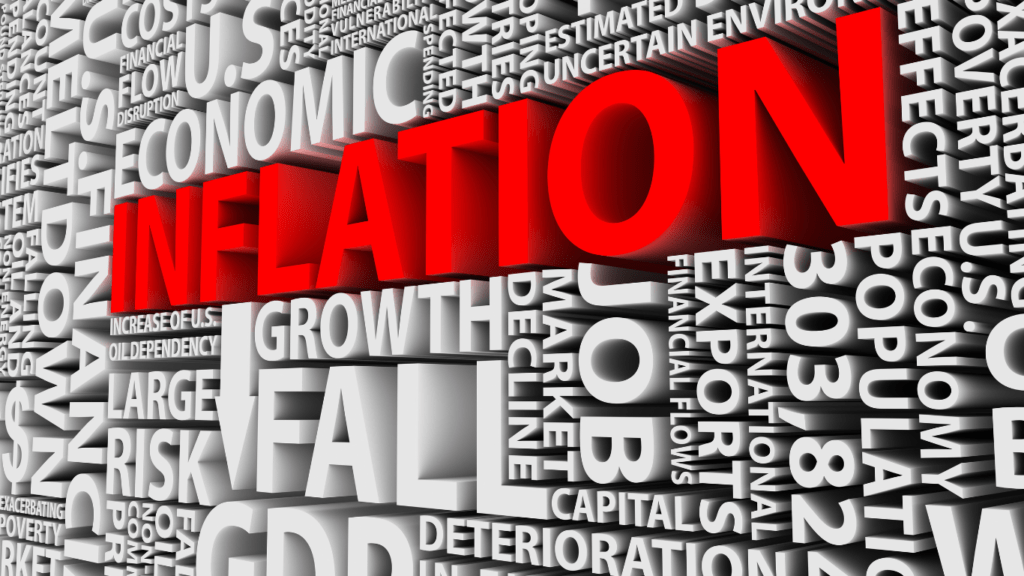Exploring the Metrics for Assessing Inflation
Posted in :

Inflation is an important economic indicator that measures the rate at which prices of goods and services in an economy are increasing.
High inflation can lead to a decrease in the purchasing power of consumers, as prices for goods and services rise faster than wages and salaries.
Therefore, measuring inflation is a crucial task for policymakers, as they use this information to make decisions on monetary policy, taxation, and public spending.
In this article, we will explore how inflation is measured and what are the different methods used to calculate it.
CPI
The Consumer Price Index (CPI)
The Consumer Price Index (CPI) is the most commonly used method to measure inflation. It is a weighted average of the prices of a basket of goods and services commonly consumed by households. The CPI is calculated by taking the price of each item in the basket and weighting it by its relative importance to the overall consumption of households.
The basket of goods and services included in the CPI varies from country to country, but it typically includes items such as food, housing, transportation, and healthcare.
The weightings of these items are based on the expenditure patterns of households in the economy being measured.
For example, if housing costs make up a larger proportion of household spending in one country, the housing component of the CPI will have a higher weighting in that country.
The CPI is calculated on a monthly basis by collecting price data for each item in the basket from a sample of retail outlets and service providers.
The prices are then weighted and aggregated to produce an overall index value.
The percentage change in the CPI from one period to the next is used as a measure.
Post: Live Within Your Means Without Feeling Deprived

The Producer Price Index (PPI)
The Producer Price Index (PPI) is another method used to measure. It measures the average change over time in the prices received by producers for their goods and services.
The PPI is calculated by taking the price of each item produced and weighting it by its relative importance to the overall production in the economy.
The basket of goods and services included in the PPI varies from country to country, but it typically includes raw materials, intermediate goods, and finished goods.
The weightings of these items are based on their importance to the overall production in the economy being measured.
For example, if the production of raw materials is more important to the economy than the production of finished goods, the raw materials component of the PPI will have a higher weighting.
The PPI is calculated on a monthly basis by collecting price data for each item in the basket from a sample of producers.
The prices are then weighted and aggregated to produce an overall index value. The percentage change in the PPI from one period to the next is used as a measure of inflation.
Gross Domestic Product (GDP) Deflator
The Gross Domestic Product (GDP) deflator is another method used to measure inflation.
It measures the price change of all goods and services produced in an economy, including those not included in the CPI or PPI. The GDP deflator is calculated by dividing the nominal GDP by the real GDP and multiplying by 100.
Nominal GDP is the total value of goods and services produced in an economy at current prices, while real GDP is the total value of goods and services produced in an economy at constant prices.
The GDP deflator measures the difference between these two values, and the percentage change in the GDP deflator from one period to the next is used as a measure of inflation.
The GDP deflator is considered to be a broad measurement of inflation because it includes all goods and services produced in an economy, regardless of whether they are consumed by households or used in production.
However, it is less commonly used than the CPI and PPI because it is more difficult to calculate and is subject to more measurement errors.
What causes inflation?
It is a persistent rise in the prices of goods and services in an economy over a period of time.
It is an economic phenomenon that affects everyone in the economy, from consumers to producers, investors, and policymakers. Inflation can have both positive and negative effects on an economy, depending on the cause and the magnitude of the inflation. In this article, we will explore the main causes of inflation.
Demand-Pull Inflation
Demand-pull inflation is caused by an increase in aggregate demand in the economy that exceeds the available supply of goods and services.
When demand exceeds supply, prices rise, as consumers compete for limited resources. This type of inflation is commonly seen during periods of economic growth, when unemployment is low, and incomes are rising.
For example, during the post-World War II period, the US experienced a period of rapid economic growth and low unemployment, which led to a surge in demand for goods and services. The resulting increase in prices was seen as demand-pull inflation.
Cost-Push Inflation
Cost-push inflation is caused by an increase in the cost of production, which is then passed on to consumers in the form of higher prices. This type of inflation is commonly seen during periods of rising energy or commodity prices or due to supply chain disruptions.
For example, during the oil crisis of the 1970s, oil prices skyrocketed, which caused the cost of production to increase for many businesses. As a result, these businesses passed on the increased costs to consumers in the form of higher prices, leading to cost-push inflation.
Monetary Inflation
Monetary inflation is caused by an increase in the money supply in an economy, which leads to an increase in the demand for goods and services. When there is more money chasing the same amount of goods and services, prices rise. This type of inflation is commonly seen when central banks print too much money or lower interest rates too much.
For example, during the Great Recession of 2008-2009, the Federal Reserve lowered interest rates to near zero and engaged in quantitative easing to stimulate economic growth. This led to an increase in the money supply, which contributed to higher inflation in subsequent years.
Structural Inflation
Structural hikes in price is caused by long-term changes in the structure of an economy that lead to persistent price increases. This type of inflation is commonly seen when there are changes in technology, demographics, or government policies that lead to persistent inflation.
For example, the aging of the population in many developed countries has led to an increase in healthcare costs, which has contributed to structural increases. In addition, the growth of technology has led to increased demand for high-skilled workers, which has led to persistent wage hikes.
Imported Inflation
Imported inflation is caused by an increase in the price of imported goods and services. When the price of imports increases, this can lead to an increase in the cost of production for businesses that rely on these imports. This, in turn, can lead to an increase in prices for consumers.
For example, when the price of oil increases, this can lead to an increase in the cost of production for many businesses. If these businesses pass on the increased costs to consumers, this can lead to higher prices for goods and services.
Expectations-Based
Expectations-based inflation is caused by expectations of higher cost leading to price increases. If consumers expect prices to rise, they may increase their demand for goods and services, leading to higher prices.
Similarly, if businesses expect their costs to rise, they may increase their prices to maintain their profit margins.


